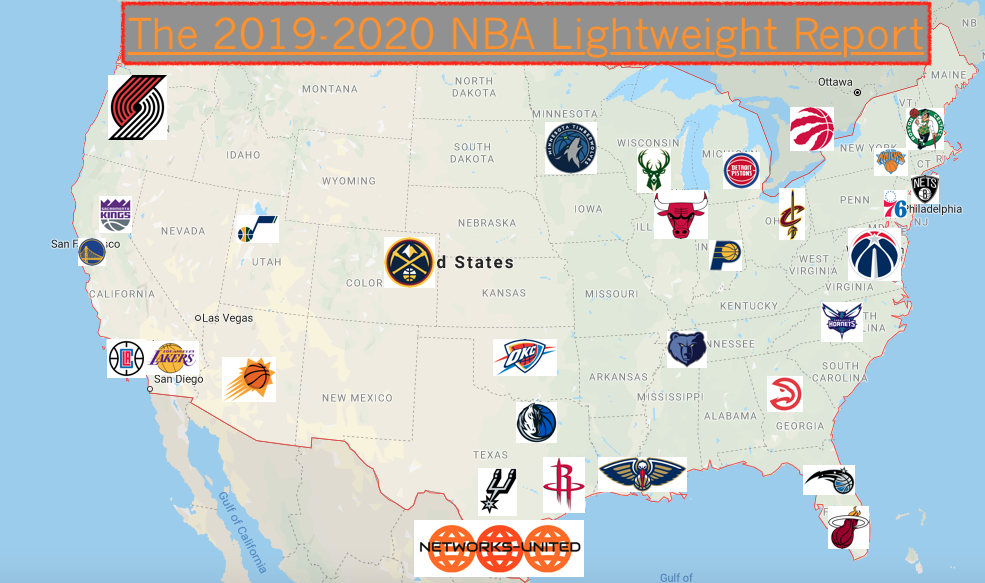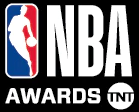The Networks United will not be waiting until Halloween to get the Lightweight Report out for once! The tenth season of this tragically underused site gets some NBA material finally, the first item from the top basketball league in the world since I tried to tell you all how the 2019 NBA Finals would end.
A lot has changed since those fateful spring days in the NBA; there are a lot more “duos” now, hence The Cars at the top of the file here. But it is still a five-on-five game, and the Lightweight Report is here to drop tasteful takes that will have to hold up for the entire season, because I’m not about changing things up after I make initial predictions:
NBA previewing does not require as much science. The NFL schedule is a significant variable in a team’s success. Everyone plays everyone in the NBA, so the best teams win. Alas, there’s the caveat with the “team” parts of things. In the NFL, teams (and their coaching staffs) are pretty much set for the season. In the NBA, things change constantly: Stars get traded, injuries and transactions can completely remake a team, and coaches and even general managers can lose their job with as little as a bad 16-game streak. Nobody is safe in the NBA!
Every NBA Lightweight Report ever
I will be around throughout the NBA season to lay out how each team is progressing after 16, 32, 48, 64 and 82 games. Here are the expected dates for these reports:
- START (November 27)
- OLD YEAR (January 3)
- ALL-STAR BREAK/MIDSEASON (February 1)
- POST-TRADE DEADLINE (March 13)
- END (April 15)
For this Lightweight Report, we’re going back to the basics. I’ll share the grades for every team, by division. (Check the footnote here for the explainer!) 1
As for the individual teams! I have ranked them by Conference standing, and I will link out to the rotation chart that I spent the preseason threading together. Each team’s “lightweight report” will look like this:
We're 30 days away from real NBA time so we're gonna get into these changes here.
— Law Murray ? (@LawMurrayTheNU) September 24, 2019
Starting with the New York Knicks. Took my crack at not just who is starting, but who might be in the rotation for this woebegone franchise pic.twitter.com/ZnkqyUmBVA
I believe that is plenty for an intro. I can be found @LawMurrayTheNU – all views are my own, obviously.


| ATLANTIC | CENTRAL | SOUTHEAST |
| Boston (2nd E) | Milwaukee (1st E) | Orlando (6th E) |
| Philadelphia (3rd E) | Indiana (4th E) | Miami (7th E) |
| Toronto (5th E) | Detroit (9th E) | Atlanta (10th E) |
| Brooklyn (8th E) | Chicago (13th E) | Washington (11th E) |
| New York (12th E) | Cleveland (15th E) | Charlotte (14th E) |
| EAST QUARTERS | EAST SEMIS | EAST FINALS |
| MIL over BRK | ||
| MIA over BOS | MIL over TOR | |
| ORL over PHI | MIA over ORL | |
| TOR over IND | ||
| MIL over MIA |

| NORTHWEST | PACIFIC | SOUTHWEST |
| Utah (1st W) | LA (2nd W) | Houston (5th W) |
| Denver (4th W) | Los Angeles (3rd W) | San Antonio (6th W) |
| Portland (7th W) | Sacramento (8th W) | New Orleans (9th W) |
| Minnesota (10th W) | Golden State (12th W) | Dallas (11th W) |
| Oklahoma City (12th W) | Phoenix (15th W) | Memphis (14th W) |
| WEST QUARTERS | WEST SEMIS | WEST FINALS |
| UTA over SAC | ||
| LAC over POR | HOU over UTA | |
| LAL over SA | LAL over LAC | |
| HOU over DEN | ||
| LAL over HOU |

ROY: MEM PG Ja Morant
6MOY: SAC SG Bojan Bogdanovic
COY: UTA HC Quin Snyder
MIP: WAS C Thomas Bryant
DPOY: ORL SF Jonathan Isaac
MVP: LAL PF Anthony Davis

